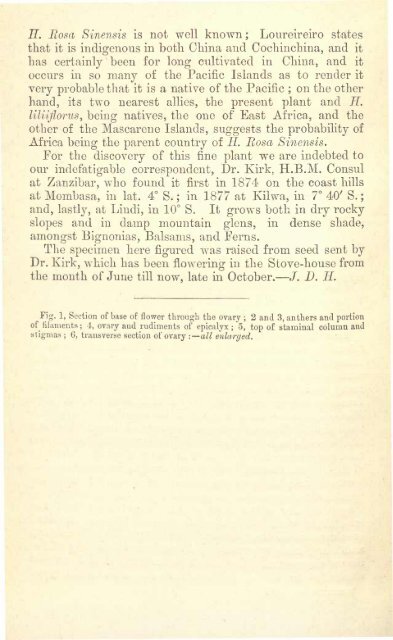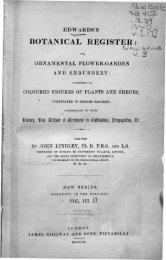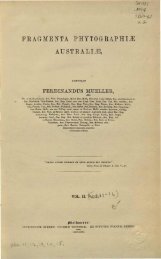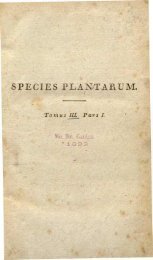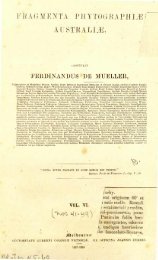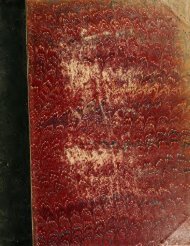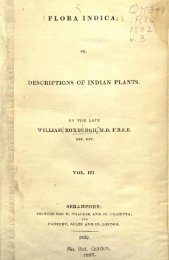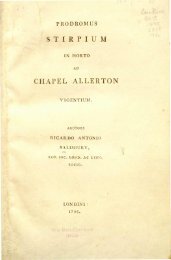Botanical Magazine 106 - 1880.pdf - hibiscus.org
Botanical Magazine 106 - 1880.pdf - hibiscus.org
Botanical Magazine 106 - 1880.pdf - hibiscus.org
Create successful ePaper yourself
Turn your PDF publications into a flip-book with our unique Google optimized e-Paper software.
H. Rosa Sinensis is not well known; Loureireiro states<br />
that it is indigenous in both China and Cochinchina, and it<br />
has certainly been for long cultivated in China, and it<br />
occurs in so many of the Pacific Islands as to render it<br />
very probable that it is a native of the Pacific ; on the other<br />
hand, its two nearest allies, the present plant and H.<br />
liliiflorus, being natives, the one of East Africa, and the<br />
other of the Mascarene Islands, suggests the probability of<br />
Africa being the parent country of H. Rosa Sinensis.<br />
For the discovery of this fine plant we are indebted to<br />
our indefatigable correspondent, Dr. Kirk, H.B.M. Consul<br />
at Zanzibar, who found it first in 1874 on the coast hills<br />
at Mombasa, in lat. 4° g. ; in 1877 at Kilwa, in 7° 40' S. ;<br />
and, lastly, at Lindi, in 10° S. It grows both in dry rocky<br />
slopes and in damp mountain glens, in dense shade,<br />
amongst Bignonias, Balsams, and Ferns.<br />
The specimen here figured was raised from seed sent by<br />
Dr. Kirk, which has been flowering in the Stove-house from<br />
the month of June till now, late in October.•J. D. H.<br />
Fig. 1, Section of base of flower through the ovary ; 2 and 3, anthers and portion<br />
of filaments ; i, ovary and rudiments of epicalyx ; 5, top of staminal column and<br />
stigmas ; 6, transverse section of ovary :•all enlarged.


